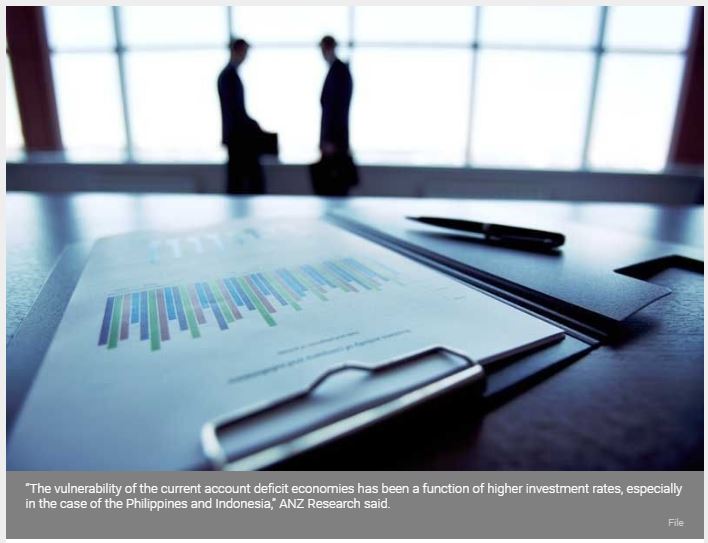Philippines more vulnerable to external shocks
MANILA, Philippines — The Philippines’ widening current account deficit as a result of higher investments will leave the country more vulnerable to external shocks and developments, according to ANZ Research.
In its Asia Macro Strategy Weekly report, ANZ Research noted that the uptick in investments has led to a current account deficit in some economies in the region, such as the Philippines.
“The vulnerability of the current account deficit economies has been a function of higher investment rates, especially in the case of the Philippines and Indonesia,” ANZ Research said.
According to ANZ Research, the Philippines’ investment rate has expanded to 26.1 percent of its gross domestic product (GDP) in June, mainly driven by the Duterte administration’s massive infrastructure program.
However, ANZ Research said the Philippines’ savings as a percentage of GDP has also declined to 27.6 percent as of end-June, leaving the country more vulnerable to global shocks.
“At 27.6 percent of GDP, the (Philippine) economy also has one of the lowest saving rates in the region, which increases its external vulnerability during phases of high growth,” ANZ Research said.
Meanwhile, ANZ Research said it is still too early to assess the impact of the Bangko Sentral ng Pilipinas’ monetary tightening on external imbalances.
According to data from the BSP, the country’s current account deficit ballooned to $3.1 billion in the first six months of 2018, almost 25 times higher than the $133 million shortfall recorded the same period last year.
The figure already matches the central bank’s $3.1 billion current account deficit projection for full-year 2018.
A current account deficit means the country is considered a “user of funds” and thus, is considered a net borrower from abroad. In this case, the country invested more than what its national saving can finance.
The wider shortfall was attributed mainly to the higher gap in the trade-in-goods account and lower net receipts in the primary income account, which more than offset the higher net receipts in the trade-in-services and secondary income accounts.
The trade-in-goods deficit widened 27.9 percent to $23.3 billion as imports of goods jumped 10.7 percent to $48.7 billion, while exports of goods slipped 1.6 percent to $25.3 billion.
As a result, the country’s balance of payments position (BOP) yielded a deficit of $3.3 billion in the first half of year, more than four times higher than the $706 million recorded in the same period last year.
However, the BSP earlier said the country’s current account deficit is still manageable as its foreign exchange buffer remains sufficient.
The central bank said gross international reserves reached $77.5 billion as of end-June, which is enough to cover 7.1 month’s worth of imports of foods and services.
Source: https://www.philstar.com/business/2018/10/29/1863988/philippines-more-vulnerable-external-shocks#3h8pfT117pWimwi6.99


 Thailand
Thailand




